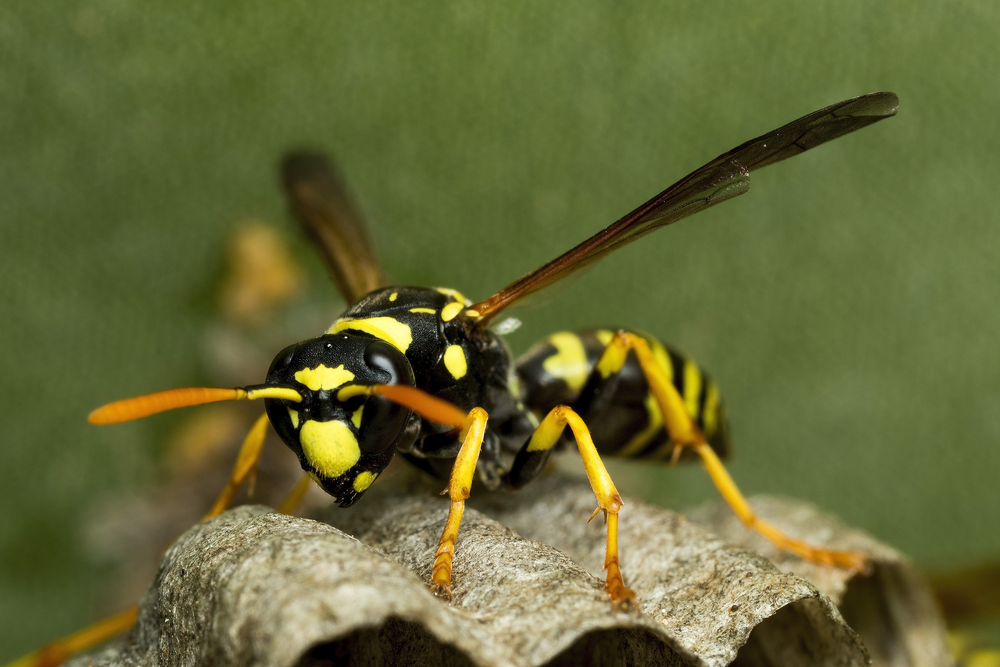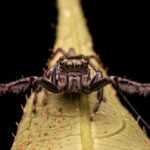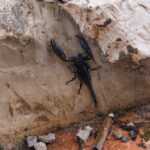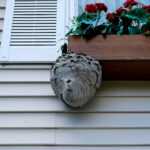Effective Pest Control Yellow Jackets: Tips & Techniques for a Sting-Free Yard
Dealing with yellow jackets in your yard? This guide offers practical pest control yellow jackets tips and techniques to ensure a sting-free environment. Learn about yellow jacket behavior, nest identification, and effective removal methods to keep your yard safe.
- Understanding yellow jackets and their aggressive behavior is crucial for effective control and prevention strategies.
- Identifying yellow jacket nests and recognizing signs of infestation helps in taking timely action to prevent larger problems.
- Employing preventive measures, professional pest control services, and DIY traps are key techniques for managing yellow jacket populations safely.
Understanding Yellow Jackets
Yellow jackets are wasps with distinctive black and yellow markings and thin waists. They build nests in trees, bushes, underground, and sheltered areas. Known for their aggressive behavior and painful stings, yellow jackets are attracted to outdoor food and sugary substances, making picnics and barbecues common targets. Unlike bees, they do not collect pollen but prey on other insects and scavenge sweet foods.
Living in large colonies, yellow jackets become more active and aggressive in late summer and early fall. Their nests are made from chewed wood fibers, often hidden in ground nests or aerial nests in trees and structures. Early identification of nests and reducing attractants like open food and garbage are key to control.
Effective management includes preventive measures, professional pest control services, and DIY traps. Safety is important—wear protective clothing and avoid sudden movements near nests to prevent stings. By understanding yellow jacket behavior and habitats, you can better protect your yard and enjoy outdoor activities safely.
What do yellow jackets look like?
Most yellow jacket species have the following characteristics:
- Yellow or black markings
- Size ranging from 38 to 58 mm in length
- Six legs
- Two pairs of elongated wings, contributing to their distinctive appearance
- Black and yellow segmented bodies, a key identifier that sets them apart from other insects like honey bees and hornets. Additionally, they belong to the family vespidae.
Compared to yellow jackets, paper wasps are more slender and have long legs that dangle during flight, making it easier to distinguish them from yellow jackets.
Unlike bees, yellow jackets have a more slender build and can sting multiple times without dying.
Yellow jacket behavior
Yellow jackets are among the most social wasps, living in large colonies and exhibiting complex social behaviors. They are known for:
- Their aggressive behavior, especially when their nest is disturbed.
- Being provoked by vibrating machinery, such as lawnmowers, which can cause them to attack.
- Highly defensive actions, repeatedly flying toward people, pets, or food sources if they feel threatened.
- Painful stings that can lead to severe allergic reactions in some individuals. Yellowjackets can be particularly dangerous in these situations.
In addition to their aggressive nature, yellow jackets are also effective predators of other insects, which contributes to their ecological importance. Yellow jackets are attracted to outdoor activities and food sources, particularly in late summer and fall. They are especially attracted to sweet things such as sugary drinks, fruits, and desserts, making them common pests at picnic areas, picnic tables, and barbecues. These behaviors can inform preventive measures to reduce encounters with yellow jackets.
Identifying Yellow Jacket Nests
Spotting yellowjacket nests is key to effective control. These nests are constructed from wood and have a paper-like texture, created when yellow jackets chew on wood fibers. Yellowjacket nests are often enclosed in a paper envelope made from chewed wood fibers and saliva, which protects the nest. Yellowjackets often build their nests in protected areas such as under eaves, inside wall voids, or in outbuildings. They can be found in a variety of sheltered locations, including wall voids, bushes, trees, and even outbuildings or sheds. Knowing their possible locations helps in addressing the issue before it escalates.
Signs of yellowjacket nests include chewed wood or paper near potential nesting sites and increased yellow jacket activity around specific areas. It is important to inspect eaves and other sheltered locations for nest entrances, as yellowjackets are highly protective of their nest entrances and may become aggressive if disturbed. Recognizing these signs early can prevent a minor issue from becoming a significant infestation.
We will explore the various types of nests yellow jackets can build and the signs indicating their presence, including hornet nests.
Ground nests and aerial nests
Yellow jackets can build two main types of nests: ground nests and aerial nests. Ground nests are typically found beneath soil surfaces and can often be quite extensive. Many yellowjackets build underground nests, which are hidden beneath the ground surface and can be difficult to locate and treat. These nests are commonly created by southern yellow jackets. On the other hand, aerial nests are constructed in elevated structures or trees and are made from the same paper-like material. Yellowjackets and paper wasps may also build nests near fruit trees, which can lead to increased encounters in orchards or gardens.
The location and structure of these nests can vary significantly. Ground nests are usually hidden and can be difficult to locate, whereas aerial nests are more visible and easier to identify. Knowing the differences between these nest types helps in locating and addressing yellow jacket infestations more effectively.
Mud daubers, unlike yellowjackets, are solitary wasps that build hard mud nests and are generally non-aggressive.
Signs of a yellow jacket nest
Frequent sightings of yellow jackets around specific areas often signal the presence of a yellowjacket nest nearby. Visible damage to wood or paper materials near potential nesting sites can also indicate yellow jacket activity.
Noticing these signs means prompt action is needed to prevent a worsening situation. While yellowjackets are highly aggressive, most species of wasps are solitary and less likely to cause problems for humans.
Yellow Jacket Life Cycle
The life cycle of yellow jackets gives insights into their behavior and aids in developing effective control strategies. The life cycle includes the following stages:
- Egg
- Larva
- Pupa
- Adult The colony’s activity peaks in late summer. In warmer climates, queen yellow jackets can continue to produce new colonies beyond a single season.
Yellowjacket colonies typically begin in spring, grow rapidly through summer, and decline in winter, with only fertilized queens surviving to start new colonies the following year.
After mating in the early fall:
- Only fertilized queens survive the winter by finding sheltered locations.
- These queens emerge in early spring to start new colonies.
- They lay the first batch of eggs and establish the nest.
We will examine the roles of queen and worker yellow jackets in the colony.
Queen yellow jackets
The queen yellow jacket’s primary functions are:
- Initiate a colony by constructing a new nest and laying the first batch of eggs.
- As spring progresses, continue to lay eggs that hatch into larvae.
- Initially feed the larvae.
Temperature changes trigger the emergence of queen wasps from dormancy, ready to start the active season anew.
Worker yellow jackets
Worker yellow jackets, as social insects, play a crucial role in maintaining the nest and foraging wasps for nectar food. They are responsible for expanding the nest, feeding the larvae, and protecting the colony from threats.
A mature colony can support up to 5,000 worker yellow jackets at its peak, making them a formidable force, especially for those interested in the behavior of vespula spp.
Effective Yellow Jacket Control Techniques
Yellow jackets play a beneficial role in the ecosystem by preying on pest insects such as caterpillars, whiteflies, and aphids, helping to naturally manage these populations. However, their aggressive behavior and tendency to nest near human activity often necessitate intervention to ensure safety.
Effective control techniques for yellow jackets involve:
- A combination of preventive measures, professional pest control services, and DIY traps.
- Identifying infestation signs early and taking prompt action to prevent yellow jackets from establishing large colonies.
- Keeping food and garbage secured to significantly deter yellow jackets from frequenting your property.
To reduce yellow jacket attraction, consider the following practices:
- Cover food and drinks outdoors.
- Regularly clean outdoor dining areas.
- Implement effective waste management practices, such as securely sealing trash
Aerosol products are also available for treating active yellowjacket nests. These sprays project a stream of highly evaporative substances that can quickly freeze or stun wasps, making them effective for direct nest treatment during the daytime. Treatments are most effective when applied directly to the nest entrance, as this is the main point of access for yellow jackets and where guard wasps are stationed.
Let’s explore some specific control techniques in more detail.
Preventive measures
To minimize yellow jackets, keep your yard clean by removing debris and sealing trash containers to reduce potential nesting sites. Use natural repellents like peppermint and clove oils to deter yellow jackets from gardens. Early spring monitoring helps detect infestations, and removing nests in the fall prevents reactivation in spring.
Professional pest control services offer thorough nest removal and long-term prevention, often providing free inspections to assess infestations.
DIY traps made from soda bottles with sugary bait can effectively reduce yellow jacket populations and make your yard safer.
When dealing with yellow jackets, wear protective clothing such as long sleeves, pants, gloves, and a veil to avoid painful stings. Move slowly near nests and avoid bright colors or floral patterns that attract them.
Prevent yellow jackets by covering food and drinks outdoors, disposing of garbage properly, and choosing plants that attract beneficial insects instead of yellow jackets. Regularly inspect your property and maintain landscaping by mowing lawns and removing debris.
For professional help, contact local pest control services for inspections and treatments to keep your yard sting-free.
Professional pest control services
Using expert pest control services increases the likelihood of effectively eliminating yellow jacket nests and preventing future infestations. Hiring professionals can provide tailored solutions that ensure thorough nest removal and long-lasting prevention.
Many pest control companies offer free inspections to assess infestations in North Las Vegas.
DIY yellow jacket traps
Creating traps can effectively reduce yellow jacket populations by attracting and capturing them. DIY traps can be made using simple materials like soda bottles filled with sugary bait.
These traps lure yellow jackets, reducing their numbers and making your yard safer from the trap of these pests.
Safety Precautions When Dealing with Yellow Jackets
Safety is paramount when dealing with yellow jackets. Their stings can be painful and, in some cases, cause severe allergic reactions. Staying calm and avoiding sudden movements near yellow jackets can prevent provoking them. Understanding these safety precautions can help you manage yellow jackets more effectively.
Individuals allergic to yellow jacket stings should carry treatment kits while outdoors. Wearing protective clothing is also crucial to prevent painful stings. We will explore these safety measures in more detail.
Wear protective clothing
Wearing protective clothing is crucial when dealing with yellow jackets to prevent painful stings. Recommended protective gear includes:
- A long-sleeved shirt
- Long pants
- Gloves
- A veil or head net to cover exposed skin.
Ensuring that you are well-protected can make a significant difference in avoiding stings.
Avoiding yellow jacket stings
Knowing how to avoid yellow jacket stings is crucial for safety, as their stings are painful and they can sting multiple times. Slow movements are recommended to avoid attracting yellow jackets when near their nests.
Avoid wearing bright colors or floral patterns, as these can attract yellow jackets.
Yellow Jacket Prevention Tips
To prevent yellow jackets from becoming a problem:
- Properly dispose of garbage and food scraps.
- Keep food and drink covered when outdoors to deter yellow jackets.
- Wear solid colors rather than bright patterns to reduce the chances of attracting yellow jackets.
Using plants that attract beneficial insects rather than yellow jackets can help reduce their presence in your garden. Certain plants, like mint and marigold, can naturally deter yellow jackets and attract beneficial insect when included in landscape designs. Spiders are also beneficial predators that help control pest insects in the garden, contributing to natural pest management.
We will delve deeper into regular property inspections and landscaping tips.
Regular property inspections
Regular property inspections are vital for detecting and addressing potential yellow jacket nesting sites early. Frequent property checks help identify potential yellow jacket nesting sites early.
Preventive strategies include keeping garbage cans sealed and regularly removing fallen fruit to deter yellow jackets.
Landscaping tips
Landscaping plays a crucial role in managing yellow jackets by reducing their attractive features in your yard. Select plants that are less appealing to yellow jackets, such as those without strong fragrances or sweet fruits.
Keep your yard tidy by regularly mowing the lawn, pruning bushes, and removing debris to minimize nesting sites.
Contact Professional Pest Control
Contact Las Vegas Pest Control for professional yellow jacket management and other pest control services. Their Home Protection Plan includes:
- Year-round protection from yellow jackets and other pests
- Inspection of your property by a certified technician
- Customized treatment for yellow jacket nests
After yellow jacket extermination, you will receive a detailed report and helpful tips to keep pests away. Fox Pest Control technicians undergo thorough screening, extensive classroom training, and ongoing on-the-job mentoring.
Tackling yellow jacket problems requires a comprehensive approach, from understanding their behavior to effectively managing their presence. Recognizing their distinctive black and yellow bodies and aggressive behavior can help you identify them quickly. Yellowjacket problems can escalate quickly if not addressed, making early intervention and ongoing management essential. Knowing where they build nests and understanding their life cycle aids in timely interventions.
By implementing preventive measures, utilizing professional pest control services, and setting DIY traps, you can significantly reduce yellow jacket populations in your yard. Always prioritize safety by wearing protective clothing and taking steps to avoid stings. Regular property inspections and strategic landscaping can further prevent yellow jackets from becoming a nuisance. With these tips and techniques, you can enjoy a sting-free yard and outdoor activities without worry.
Frequently Asked Questions
What do yellow jackets look like?
Yellow jackets are easily identified by their black and yellow segmented bodies, six legs, and thin waists, typically measuring between 38 to 58 mm in length. Their two pairs of elongated wings further distinguish them from other insects.
How can I identify a yellow jacket nest?
To identify a yellow jacket nest, observe increased activity around certain areas and check for damage to wood or paper. Nests are typically located in sheltered spots like wall voids, bushes, trees, or underground.
What are the roles of queen and worker yellow jackets?
The queen yellow jacket’s primary role is to establish the colony and lay eggs, while worker yellow jackets are responsible for nest maintenance, food foraging, and larval care. Each has a crucial function in the colony’s survival and growth.
How can I prevent yellow jackets from nesting in my yard?
To prevent yellow jackets from nesting in your yard, maintain a clean environment by using sealed containers for trash, promptly cleaning spills, and employing natural repellents like peppermint and clove oils. Regular inspections and thoughtful landscaping will also contribute to keeping them at bay.
Why should I contact professional pest control services for yellow jacket management?
Contacting professional pest control services for yellow jacket management is essential, as they offer effective elimination of nests and tailored solutions that help prevent future infestations. Their expertise ensures a thorough and safe approach to handling these pests.




